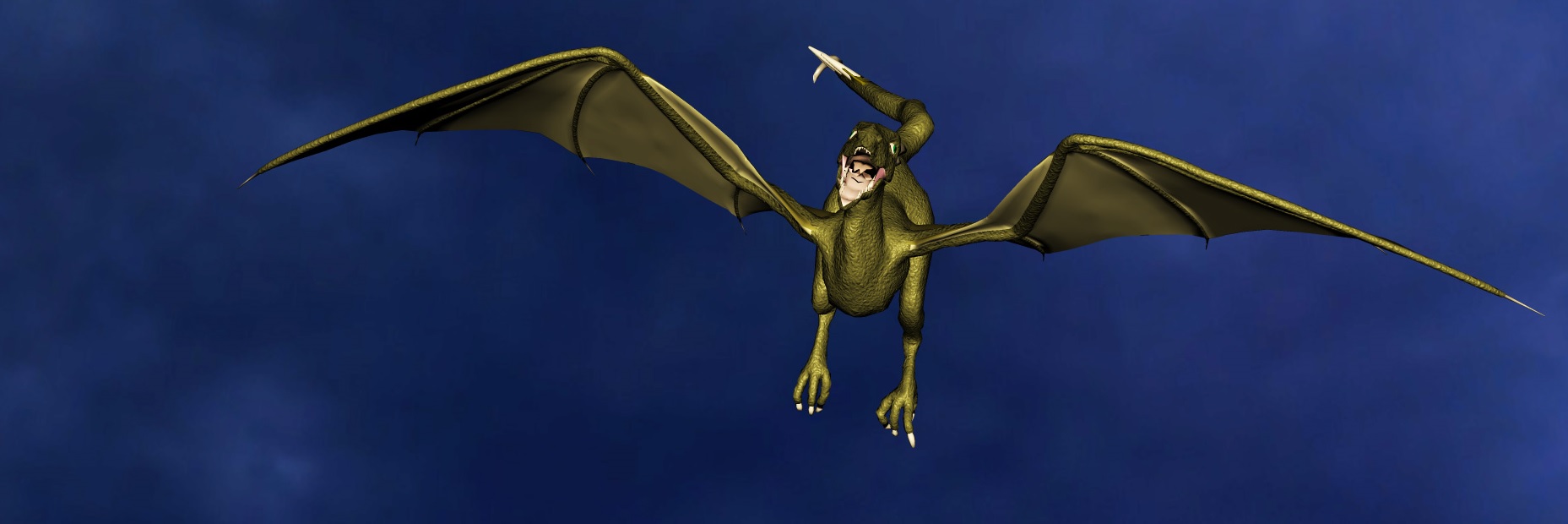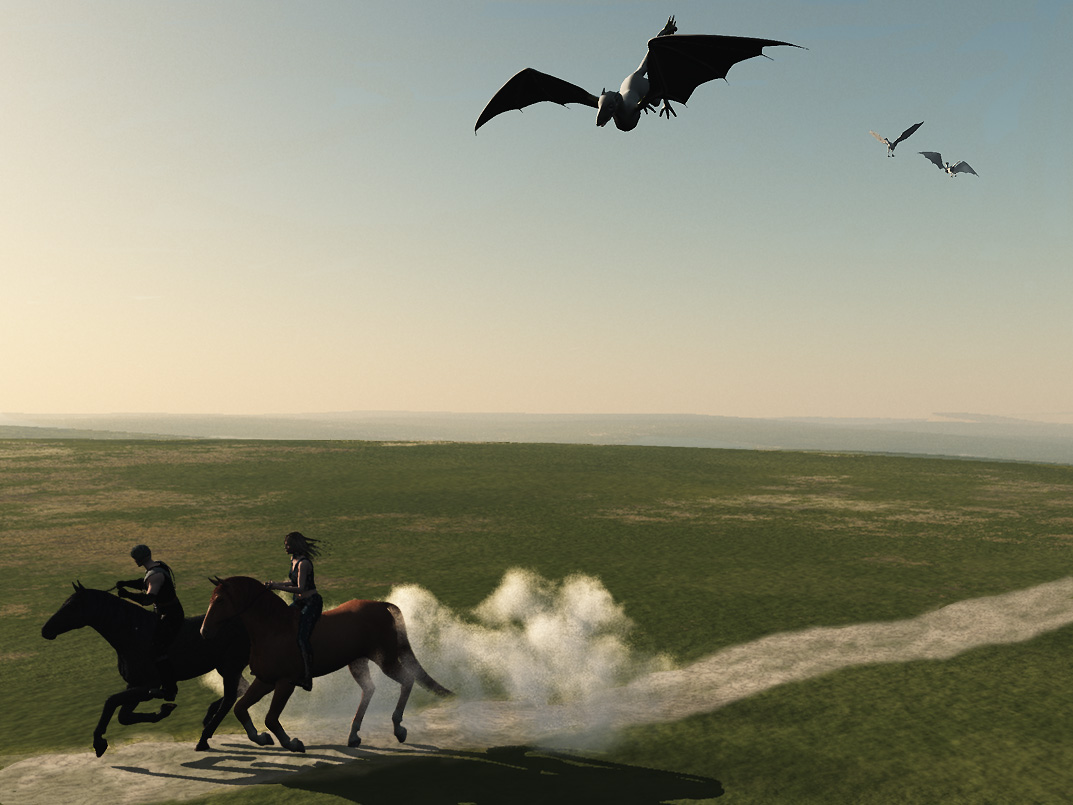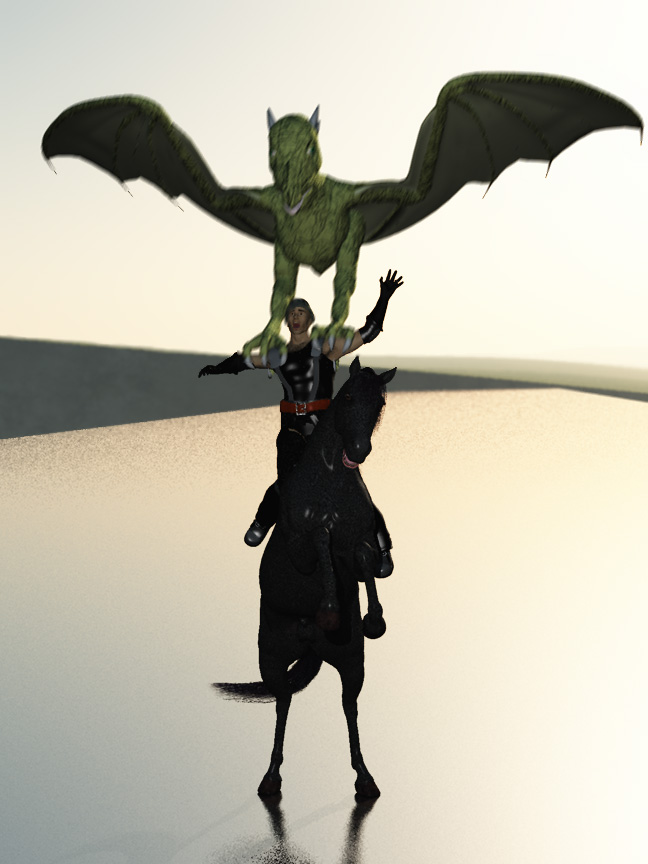Alegoyle
The alegoyle are a species of predatory flying reptile which were introduced to the World of the Long Sleep sometime at the mysterious beginning of the Season Of Innocence as part of the Gene Sea.
Basic Information
Anatomy
A typical adult alegoyle has a wing span of five metres, each wing consisting of a leathery membrane stretched over a framework of light bones connected to a very powerful muscular body. They have a long tale with a sharply barbed point which can be used as a weapon. Their feet are tipped with sharp claws and their jaws are lined with rows of ripping canine teeth which inject a weakening poison into their prey that also aids the alegoyle's own digestion.
Genetics and Reproduction
Alegoyle mate at the end of autumn. The internal gestation period is about five months, after which the female will lay a clutch of between one and three eggs that take a further two months to hatch, so that the young are born in spring and early summer when prey is plentiful. The chicks are looked after by their parents for three full years before they become fully mature hunters.
Dietary Needs and Habits
Alegoyle are ominiverous but they are primarily meat eaters who just occasionally supplement their diet with fruit when it is in season. Their usual prey consists of grazing herbivores, and they will take large animals, up to and including humans if they have no means to defend themselves.
Behaviour
The alegoyle are a communal species, living in small roosts consisting of anything between a single pair and up to twenty or more individuals. They hunt together as a flock, using intelligent strategies to run down their prey, often exhausting it first by repeated harrying from different hunters, before one of them moves in for the kill.
In the Season Of Innocence, alegoyle roosts were considered dangerous by the Riders. Attacks on humans were infrequent but far from unknown and it was customary to carry spears and use bows and arrows to defend against them.
Additional Information
Domestication
The alegoyle are fierce, wild and dangerous. It seems unlikely that they would ever be domesticated. Yet in the legends of the Awakened World, there is one famous story about an alegoyle chick, taken and tamed by Klane Kalonia. His name was Suak and he plays a big part in the stories of the legendary hero of old. That one incident (if it even happened, and is more than a legend) remains an isolated example.
Geographic Origin and Distribution
During the The Season Of Innocence, alegoyle were found throughout northern Trass, usually favouring locations with mixed woodland and moors, but sometimes patrolling the skies over the more open grassland of the downs of Illunon.
Average Intelligence
Alegoyle are clever creatures and their socialisation within the roost demonstrates an ability to understand and moderate their behaviour to achieve feats of co-operative success they could not manage alone. They show no evidence of the higher forms of intellectual awareness that might lead to culture and civilisation but they are not stupid and should not be underestimated.
Perception and Sensory Capabilities
Alegoyle eyesight is known to be very keen, enabling them to spot the movement of prey from great heights.
Lifespan
40 years
Conservation Status
In ancient times, the alegoyle were numerous and a serious (if occasional) threat to the Riders. During the early Foundation Age, they were driven from the lands surrounding the new cities and by the time of the Succession Empires, their range was limited to the far north of Trass. Now their numbers are few and it is forbidden to kill them.
Average Height
2m
Average Weight
35 kg
Average Length
2.5 m
Body Tint, Colouring and Marking
Most alegoyle have a rough yellowish green skin. Some may be brownish or even a brighter pea green. The colour is merely natural variation within the species and does not seem to offer any selective advantages or disadvantages sufficient to promote speciation.




Comments